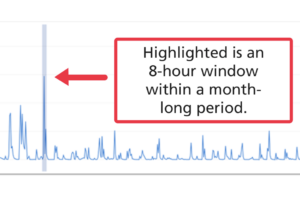Overview
Determining the particle size distribution (PSD) of the filterable particulate matter (FPM) contained within a gas stream is often a necessary and valuable sampling tool. A PSD can be used diagnostically to evaluate the performance of an air pollution control device or to gather information to design a new one. It can be used to assess the nature of a product containing process gas stream with an eye towards recovery and re-use. In some instances, it can be used for compliance purposes by application of California Air Resources Board (CARB) Method 501.
The most important decision to make is whether the PSD will be obtained using an in-situ device, which sizes the FPM as it is withdrawn from the gas stream at as-found conditions, or with a secondary method that evaluates the PSD of an extracted mass sample, usually in a laboratory. There are two primary reasons for doing extractive PSD work. The first, and most prevalent reason, is that the expertise to perform in-situ sampling is of limited extent in the industry. In-situ PSD sampling is technically challenging and is performed much less frequently than standard particulate matter source sampling methods. The second reason to use extractive sampling is that the gas stream cannot safely or reasonably be accessed with an in-situ device.
A long-held particulate sampling tenet is, “Measure it while it’s moving.” The morphology and density of the particle have a strong effect on its behavior in the gas stream in addition to its actual physical size. The gas stream factors of temperature, pressure, velocity and moisture also come into play. With an extractive method, these factors are unavailable during the measurement process and can only be predicted to varying degrees of certainty.
The two primary in-situ PSD devices are cyclones and cascade impactors.
Cyclones
The five-stage cyclone sampler developed by Southern Research Institute for the U.S. E.P.A is shown in Figure 1.

Figure 1: EPA/SoRI Five-Stage Cyclone Sampler
Each cyclone provides an individual particle size cut commonly referred to as a D50. The sizing range of the device shown is 10 to 1 micron. The sample is withdrawn isokinetically so the size distribution collected is representative of the PSD in the gas stream.
Impactors
Cascade impactors sample isokinetically and separate the sampled aerosol particles into size increments by inertial impaction of the particles on to a collection surface, which can be a lightweight greased steel foil, ultrapure quartz microfibre filter paper, or some other type of appropriate substrate material. This occurs at successive stages through the impactor, hence the name “cascade.” The Pilat, University of Washington, Mark V cascade impactor is shown in Figure 2.

Figure 2: Pilat, University of Washington, Mark V Cascade Impactor
Within this compact stainless-steel casing, 11 different D50’s ranging from ~20 to 0.1 microns are available. By changing stage configuration and adjusting sample rate the size distribution can be customized to a specific need. Cascade impactors are almost always used with a precutter head attached that enables sampling to be conducted in a standard, perpendicular to the gas stream orientation as shown in Figure 3. The precutter also can remove heavier loading of large sized particles that could overload the impactor. A special application for wet droplet PSD sampling is also possible with the precutter head. This application allows PSD sampling and analysis of saturated gas stream environments with droplets present such as downstream of a wet scrubber. Both droplet size and particulate size determinations are possible. The Pilat, University of Washington impactors have been considered the standard for in-situ PSD measurements and were the basis of the CARB 501 Method.

Figure 3: Cascade impactor with precutter head
The author of this blog post was involved with the development of the Pilat, University of Washington impactor as well as other PSD tools. For further information on determining particle size distribution in wet or dry gas streams, contact jguenthoer@cleanair.com.







